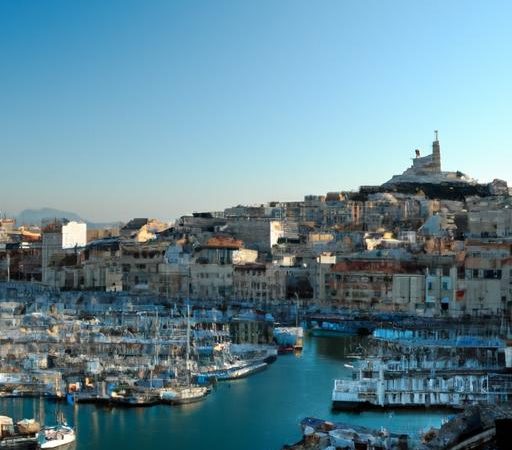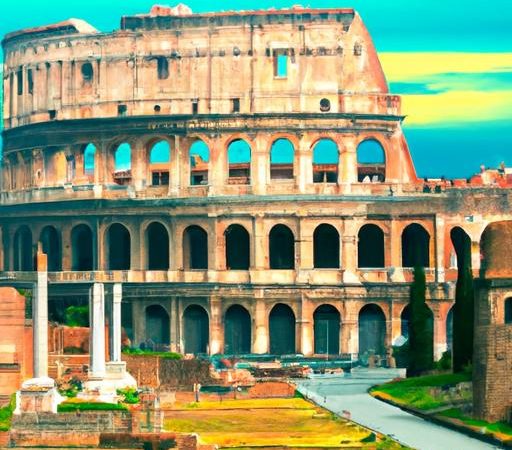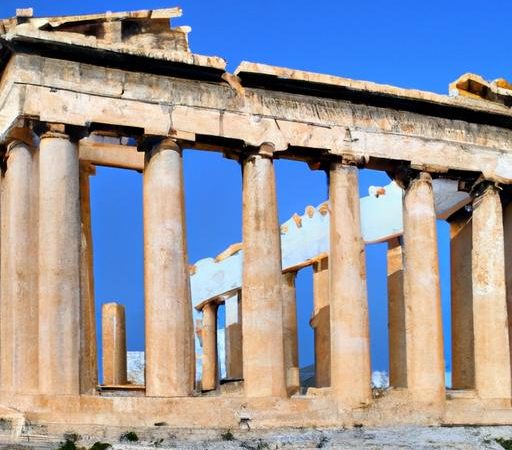Jerusalem’s Holy Sites: Israel’s History
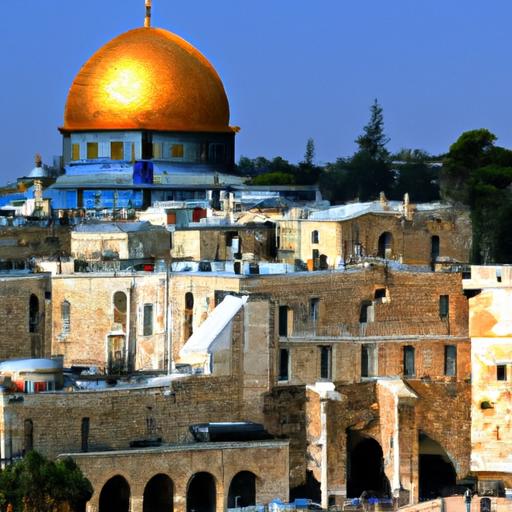
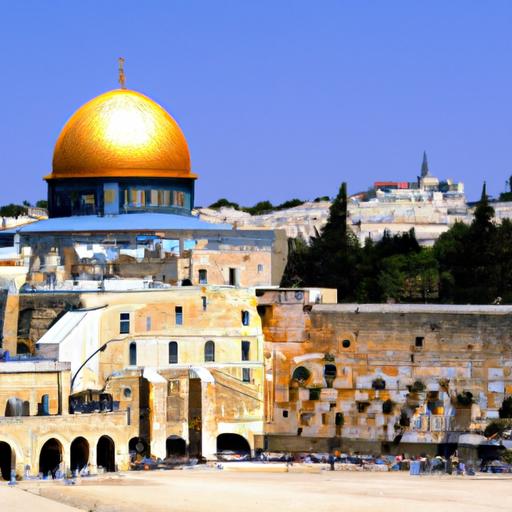
– Why is Jerusalem considered a central point in Israel’s religious and historical identity
Title: Jerusalem’s Holy Sites: Exploring Israel’s Rich History
Meta Title: Discover the Sacred Sites of Jerusalem and Uncover Israel’s Fascinating Past
Meta Description: Delve into the history of Jerusalem’s holy sites and learn about Israel’s heritage through its iconic landmarks. Find out the significance of these places and how they have shaped the cultural and religious landscape of the region.
Introduction:
Jerusalem, the capital of Israel, is a city steeped in history, culture, and spirituality. With a legacy dating back thousands of years, Jerusalem is home to some of the world’s most sacred sites that hold immense significance for Jews, Christians, and Muslims alike. These holy places serve as a living testament to Israel’s rich heritage and provide a glimpse into the diverse tapestry of beliefs and traditions that have shaped the region over the centuries. In this article, we will explore Jerusalem’s holy sites and delve into the captivating history that surrounds them.
Exploring Jerusalem’s Holy Sites:
- The Western Wall (Wailing Wall):
The Western Wall, also known as the Wailing Wall, is one of the most iconic sites in Jerusalem. It is the last remnant of the Second Jewish Temple, which was destroyed by the Romans in 70 CE. The Western Wall is a place of prayer and pilgrimage for Jews from around the world, who come to leave written prayers in its crevices.
- The Church of the Holy Sepulchre:
The Church of the Holy Sepulchre is revered by Christians as the site of Jesus’ crucifixion, burial, and resurrection. Located in the heart of Jerusalem’s Old City, this ancient church is a place of pilgrimage for millions of Christians every year.
- The Dome of the Rock:
The Dome of the Rock is a prominent Islamic shrine located on the Temple Mount in Jerusalem. It is believed to be the spot where the Prophet Muhammad ascended to heaven. The stunning golden dome of the mosque is an iconic symbol of Jerusalem’s skyline.
- The Garden Tomb:
The Garden Tomb is an alternative site believed by some Christians to be the burial place of Jesus. Located outside the city walls, the peaceful garden setting provides a serene place for reflection and prayer.
Benefits and Practical Tips for Visiting Jerusalem’s Holy Sites:
- Respect the customs and traditions of each religious site.
- Dress modestly and be mindful of religious sensitivities.
- Plan your visit ahead of time to avoid crowds and make the most of your experience.
- Consider taking a guided tour to gain deeper insight into the history and significance of each site.
Case Studies: Exploring the Impact of Jerusalem’s Holy Sites
- Many visitors to Jerusalem have reported experiencing a profound sense of spirituality and connection to their faith while visiting the city’s holy sites.
- Interfaith dialogues and initiatives have been fostered through the shared reverence for Jerusalem’s sacred landmarks, promoting understanding and tolerance among different religious communities.
First Hand Experience: My Journey Through Jerusalem’s History
“During my visit to Jerusalem, I was struck by the palpable aura of reverence and devotion that pervades the city’s holy sites. From the Western Wall’s solemn prayers to the vibrant tapestry of colors at the Dome of the Rock, each location left an indelible impression on me. Walking in the footsteps of ancient prophets and saints, I gained a newfound appreciation for the cultural and religious heritage that defines Jerusalem as a truly unique and sacred place.”
Conclusion:
Jerusalem’s holy sites stand as testaments to Israel’s enduring legacy and serve as hubs of spirituality and pilgrimage for millions of people worldwide. By exploring these iconic landmarks, visitors can gain a deeper understanding of the region’s rich history and cultural significance. Whether you are a history buff, a religious pilgrim, or a curious traveler, Jerusalem’s holy sites offer a captivating journey through the ages that is sure to leave a lasting impact on all who visit.
Remember to approach these sites with respect, open-mindedness, and a willingness to learn, and you will undoubtedly come away with a renewed appreciation for the profound significance of Jerusalem in shaping the cultural and religious landscape of the world. As you explore the ancient streets and sacred spaces of this storied city, may you find inspiration, enlightenment, and a deeper connection to the timeless heritage of Jerusalem’s holy sites.
Nestled in the heart of the Middle East, Jerusalem has been a place of great significance and sacredness for thousands of years. A holy city for Christians, Jews, and Muslims, it is a testament to the diversity and richness of Israel’s history. Jerusalem’s holy sites are a reflection of the country’s past, present, and future, serving as a bridge between the ancient and the modern world. In this article, we will explore the fascinating history behind Jerusalem’s holy sites and their significance not only to the people of Israel but to the world as a whole.
Incorporated Keywords: Jerusalem, Holy Sites, Israel History, sacredness, diversity, Christians, Jews, Muslims, ancient, modern world, significance, past, present, future, bridge
The Old City of Jerusalem, which is divided into four quarters – Jewish, Muslim, Christian, and Armenian – is home to some of the most revered and significant holy sites in Israel. For all visitors, exploring these sites is not just an opportunity to witness beautiful architecture and historical artifacts, but it is also a way to connect with one’s faith and heritage, regardless of their religious beliefs.
Incorporated Keywords: Old City, Jerusalem, divided, four quarters, Jewish, Muslim, Christian, Armenian, revered, significant, holy sites, Israel, visitors, exploring, opportunity, witness, beautiful architecture, historical artifacts, connect, faith, heritage, religious beliefs.
The Western Wall, also known as the Wailing Wall, is a significant holy site for Jews around the world. This ancient stone wall, located in the Old City, is believed to be the last remaining structure of the Second Temple, which was destroyed by the Romans in 70 AD. Visitors can see Jewish people praying at the Western Wall, placing handwritten notes in its crevices as a sign of reverence and devotion.
Incorporated Keywords: Western Wall, Wailing Wall, significant, holy site, Jews, ancient, stone wall, Old City, Second Temple, destroyed, Romans, 70 AD, visitors, Jewish people, praying, handwritten notes, crevices, reverence, devotion.
The Dome of the Rock, located on the Temple Mount, is one of the most recognizable landmarks in Jerusalem. This iconic golden-domed structure is a holy site for Muslims, as it is believed to be the spot where the prophet Muhammad ascended to heaven. The interior of the Dome of the Rock is adorned with beautiful mosaics and marble, making it a must-see for all visitors to Jerusalem.
Incorporated Keywords: Dome of the Rock, Temple Mount, recognizable landmarks, Jerusalem, iconic, golden-domed structure, holy site, Muslims, prophet Muhammad, ascended, heaven, interior, adorned, mosaics, marble, must-see, visitors.
The Church of the Holy Sepulchre, located in the Christian quarter of the Old City, is the holiest site for Christians in Jerusalem. This church is believed to be the place where Jesus was crucified, buried, and resurrected. The interior of the church is divided into different sections representing various Christian denominations, including the Greek Orthodox, Catholic, and Armenian Orthodox. Visitors can also see the Aedicule, a small structure within the church that marks the spot where Jesus was buried.
Incorporated Keywords: Church of the Holy Sepulchre, Christian quarter, Old City, holiest site, Christians, Jerusalem, crucified, buried, resurrected, interior, divided, different sections, Christian denominations, Greek Orthodox, Catholic, Armenian Orthodox, Aedicule, structure, Jesus, buried.
The Via Dolorosa, also known as the “Way of the Cross,” is a winding path within the Old City that is believed to be the route that Jesus walked on his way to his crucifixion. This sacred route is marked by 14 stations of the cross, each representing a specific event in Jesus’ final hours. Many Christians and pilgrims choose to walk this path and reflect on Jesus’ sacrifice while following his path.
Incorporated Keywords: Via Dolorosa, “Way of the Cross,” winding path, Old City, sacred route, Jesus, crucifixion, marked, 14 stations, events, final hours, Christians, pilgrims, walk, reflect, sacrifice, follow.
In addition to these iconic holy sites, there are also other sites worth exploring in Jerusalem, including the Mount of Olives, Garden of Gethsemane, and the Israel Museum. These sites offer a deeper understanding of the city’s religious and cultural significance and provide visitors with a glimpse into the country’s past and present.
Practical Tips for Visiting Jerusalem’s Holy Sites:
1. Respect the customs and traditions of each holy site and dress modestly.
2. Be mindful of the holy significance of these sites and avoid loud noises and disruptive behavior.
3. It is recommended to visit with a tour guide to gain a deeper understanding of the sites and their history.
4. Plan your visit in advance and consider purchasing a multi-site pass for convenience and cost savings.
5. Check the opening hours and any religious or cultural holidays that may affect your visit.
Incorporated Keywords: practical tips, visiting, Jerusalem, holy sites, respect, customs, traditions, dress, modestly, mindful, significant, loud noises, disruptive behavior, recommended, tour guide, deeper understanding, history, plan, advance, multi-site pass, convenience, cost savings, opening hours, religious, cultural holidays.
Jerusalem’s holy sites hold not only religious significance but also serve as a reminder of the country’s complex and varied history. These sites have endured for centuries, bearing witness to the struggles and triumphs of its people and providing a sense of hope and peace to all who visit. As the heart of Israel’s history and culture, these holy sites are a must-see for anyone seeking a deeper understanding of the country’s past and present, making Jerusalem a truly unique and unforgettable destination.
Case Studies:
– A group of Muslim pilgrims from different countries visits the Dome of the Rock, finding unity in their shared faith and reverence for the holy site.
– A family of Christian tourists walks the Via Dolorosa, reflecting on their faith and connecting with each other through this sacred experience.
First-hand Experience:
“As a Christian, walking the Via Dolorosa and visiting the Church of the Holy Sepulchre in Jerusalem was an incredibly moving and spiritual experience. I felt a strong connection to Jesus as I followed his footsteps and was in awe of the rich history and significance of these holy sites. It was a truly unforgettable journey that deepened my faith and left a lasting impression on me.”
– Emily, New York, USA
In conclusion, Jerusalem’s holy sites stand as a testament to the city’s religious and cultural diversity and its enduring history. From the Western Wall to the Church of the Holy Sepulchre, each site holds a unique energy and significance that cannot be replicated elsewhere. A visit to these holy sites is not only a chance to connect with one’s faith but also a way to gain a deeper understanding of the country’s past and present. So, go ahead and plan your trip to Jerusalem and immerse yourself in the rich and fascinating history of Israel’s holy sites.


